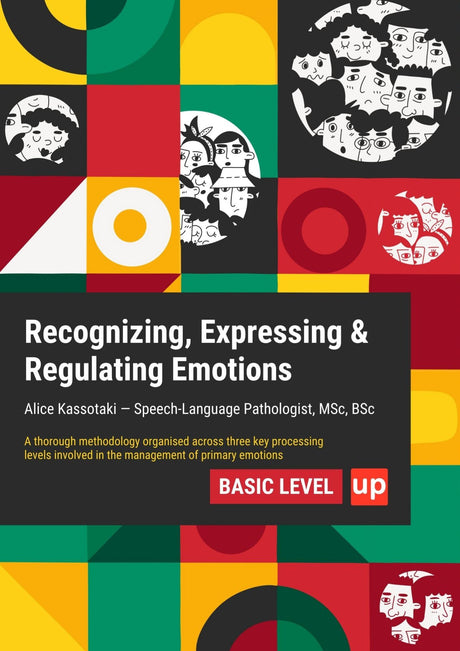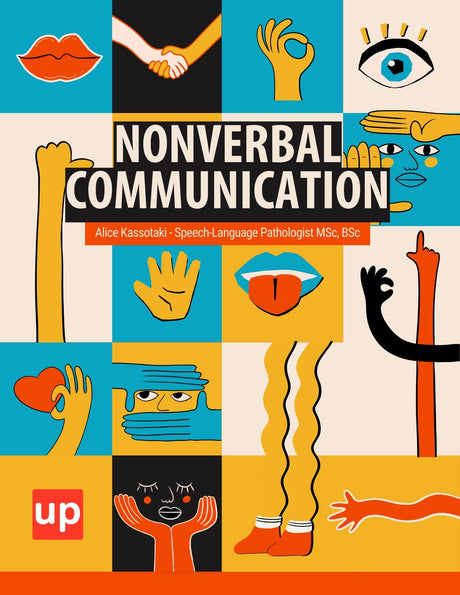Have you ever assembled flat-pack furniture and marveled at your ability to translate confusing diagrams into a three-dimensional object? Or navigated a new city using only a map and your sense of direction? These common tasks are powered by a remarkable cognitive tool: your visual-spatial intelligence. This is your mind's inner architect, the part of your brain responsible for perceiving, analyzing, and understanding the visual world.
While often associated with the developmental play of children, these skills are not static. For adults, intentionally engaging in visual-spatial activities is a powerful way to sharpen the mind, boost cognitive resilience, and unlock new ways of thinking. The growing interest in this area is clear; the global market for brain games was valued at USD 8.2 billion in 2023 and is expected to reach USD 22.3 billion by 2033, reflecting a collective desire to invest in our mental acuity. This article will guide you through the what, why, and how of enhancing these crucial abilities.
Key Points
- Visual-spatial intelligence is vital for adults as it supports essential cognitive functions like problem-solving, memory, creativity, and navigation in everyday life and professional settings.
- Engaging in targeted visual spatial activities for adults—such as puzzles, strategy games, and mental imagery exercises—can significantly enhance brain function, cognitive resilience, and mental agility.
- Adopting a growth mindset and consistent practice is key to developing and maintaining strong visual-spatial skills throughout adulthood, leading to improved performance in both personal and professional domains.
Visual Spatial Activities for Adults: Unleashing Your Mind's Inner Architect
The Power of Visual-Spatial Intelligence for Adults

Visual-spatial intelligence is the ability to think in three dimensions. It can affect various aspects of an adult's personal and professional life, influencing career opportunities and personal development. It involves mentally manipulating objects, visualizing outcomes, and understanding the relationships between different elements in space. For adults, this isn’t just about reading maps or packing a car trunk efficiently. It’s a core component of problem-solving, strategic planning, and creativity across personal and professional domains.
Why Sharpening Your Mind Matters in Adulthood
In an increasingly complex world, mental agility is paramount. Actively training your visual-spatial skills helps maintain cognitive function, improves memory, and can even enhance processing speed. It's a proactive approach to lifelong learning, ensuring your brain remains adaptable and sharp as you navigate new challenges and information.
Beyond Childhood Play: Reaping Cognitive Benefits
Many of the most effective visual-spatial exercises—like building with blocks or solving puzzles—have roots in childhood activities. However, for adults, these are not mere games. They are sophisticated tools for neuroplasticity, the brain's ability to reorganize itself by forming new neural connections. Engaging in these activities systematically can lead to tangible improvements in focus, reasoning, and overall mental performance.
Understanding Visual-Spatial Skills: More Than Just Seeing
What are Visual-Spatial Skills?
This section will explain what visual-spatial skills are and why they matter.
Visual-spatial skills are a set of cognitive functions that allow us to process and interpret visual information about where objects are in space. They are how we make sense of our physical environment and our position within it. This involves everything from recognizing shapes and symbols to judging distances and understanding how different parts of a system fit together.
The Spectrum of Visual-Spatial Abilities
This skill set is multifaceted and includes several distinct but related abilities:
- Visual Perception: The brain’s ability to interpret what the eyes see. This includes distinguishing between similar shapes, filtering out irrelevant background information, recognizing objects from different angles, and noticing important details that help differentiate between similar objects.
- Spatial Relationships: Understanding how objects are positioned in relation to each other and to yourself. This is crucial for tasks requiring an awareness of direction, position, and orientation, as well as visualizing different positions of objects in space.
- Visual Memory: The ability to recall visual information. This can be short-term, like remembering a phone number you just saw, or long-term, like picturing the layout of your childhood home.
- Visual Processing: The speed and efficiency with which you can analyze and make sense of visual images.
- Visuospatial Skills: The overarching term for the combination of these abilities, enabling complex tasks like navigation and object manipulation.
Multiple Intelligences Theory: Where Visual-Spatial Fits In
Visual-spatial intelligence holds a prominent place in Howard Gardner’s Multiple Intelligences Theory, which redefined how we understand human potential. Rather than viewing intelligence as a single, fixed ability, Gardner proposed that there are multiple intelligences, each representing a unique way of processing information. Visual-spatial intelligence is one of these core types, and it centers on the ability to mentally manipulate objects, visualize spatial relationships, and interpret the world through images and patterns.
This form of intelligence is essential for problem solving, creative thinking, and innovation. People with strong visual-spatial skills can easily visualize and create new designs, understand how different objects fit together, and navigate complex environments. These abilities are especially valuable in fields like architecture, where professionals must visualize structures before they are built, and in design, where spatial awareness and the ability to mentally manipulate shapes are crucial. For children, developing visual-spatial intelligence lays the foundation for success in a variety of disciplines, from science and engineering to the arts. By recognizing and nurturing this intelligence, educators and parents can help children—and adults—unlock their full creative and cognitive potential.
How Visual-Spatial Skills Influence Daily Adult Life
These skills are constantly at work. Strong spatial ability is essential for planning a travel itinerary, organizing a cluttered room, or following a complex recipe. Navigation skills depend on our capacity to mentally create and manipulate maps. Problem-solving often requires visualizing a problem’s components and seeing their spatial relations in a new light to find a solution.
The Brain's Role: A Glimpse into the Parietal and Occipital Lobes
Visual-spatial processing is primarily handled by two key areas of the brain. The occipital lobe, at the back of the head, is the visual processing center that receives and interprets raw data from the eyes. The parietal lobe, located above it, integrates this sensory information to build a coherent understanding of the spatial world, helping us determine location, orientation, and movement. Visuospatial processing refers to the cognitive skill involved in perceiving and understanding the spatial relationships among objects.
The Adult Advantage: Benefits of Enhanced Visual-Spatial Acuity
Boosting Problem-Solving and Critical Thinking

Strengthening your visual-spatial skills trains your brain to see the bigger picture. These skills can be trained and improved through specific exercises and activities designed to target spatial visualization and planning. It enhances your ability to recognize patterns, understand complex systems, and mentally model different scenarios before taking action. This form of visualization is a cornerstone of effective strategic planning and critical thinking.
Enhancing Memory and Recall
A strong visual memory is a powerful asset. When you can create vivid visual images associated with information, your recall improves dramatically. Improving your visual ability through targeted activities, such as puzzles and games, can further enhance both memory and recall by strengthening visuospatial skills. In fact, some research suggests that individuals with high visual-spatial intelligence can process visual information approximately 60,000 times faster than textual information. Activities that challenge your visual recognition and memory build a more robust and accessible mental database.
Improving Navigation and Orientation
Whether you're using digital maps or navigating an unfamiliar building, your visual-spatial skills are in charge. Sharpening them improves your innate sense of direction and your ability to interpret environmental cues. This extends to understanding spatial language—terms like "parallel," "adjacent," and "perpendicular"—which is critical for clear communication and instruction.
Fostering Creativity and Innovation
Creativity is often about connecting disparate ideas in novel ways. Visual-spatial training, particularly through visual arts like drawing, painting, creating paintings, or sculpture, encourages this process by developing spatial relationships and depth perception. Visualization allows you to mentally prototype ideas, manipulate shapes and forms in your mind’s eye, and explore creative possibilities before committing them to paper or clay.
Sharpening Focus and Attention
Many visual-spatial activities demand high levels of concentration. Tasks like visual tracking (following a moving object) or detailed observation train your visual attention systems. This practice in sustained focus can translate into improved concentration in other areas of your life, from reading dense reports to engaging in deep conversation.
Supporting Mental Agility and Cognitive Resilience
Engaging in novel and challenging spatial tasks stimulates the brain, improving processing speed and other core cognitive functions. Regularly practicing visual-spatial activities can help build cognitive reserve and resilience by reinforcing these skills through hands-on experience. This mental exercise builds cognitive reserve, which is the mind’s resistance to damage. A resilient brain is better equipped to handle stress and adapt to change.
Embracing a Growth Mindset for Lifelong Learning
Pioneering psychologist Carol Dweck’s research on mindset is highly relevant here. Believing that your abilities, including visual-spatial intelligence, can be developed through dedication and hard work is the first step. The aim of engaging in visual-spatial activities is to foster continuous growth and improvement. Adopting a growth mindset transforms challenges from potential failures into opportunities for learning and brain-building.
Real-World Applications of Visual-Spatial Intelligence

Visual-spatial intelligence is not just an abstract concept; it’s a practical skill set that impacts countless aspects of everyday life. From navigating a busy city street to assembling furniture or interpreting a subway map, visual-spatial skills are essential for making sense of the world around us. These abilities allow us to create mental maps, recognize patterns, and analyze visual information quickly and accurately.
In professional settings, visual-spatial intelligence is indispensable. Architects rely on their spatial awareness to design buildings and visualize how different elements will come together in three-dimensional space. Engineers use these skills to solve complex problems, develop innovative products, and ensure that systems function smoothly. In medicine, doctors and surgeons must visualize the human body’s internal structures to diagnose conditions and plan treatments. Even in creative fields like art and photography, the ability to perceive spatial relationships and patterns is key to producing compelling work. By strengthening visual-spatial skills, individuals can enhance their problem-solving abilities, improve performance in everyday tasks, and become more effective in both personal and professional environments.
Careers That Require Strong Spatial Abilities
A wide range of careers depend on strong visual-spatial intelligence and spatial awareness. Architects, designers, and engineers are classic examples—these professionals use their abilities to visualize, plan, and create everything from buildings to products to digital environments. Urban planners and landscape architects also rely on spatial intelligence to design functional, beautiful spaces that meet the needs of communities.
The influence of visual-spatial skills extends into the world of technology and entertainment. Video game designers, for instance, must visualize complex game worlds and create engaging, interactive experiences. In STEM fields, scientists in disciplines like physics, chemistry, and biology use visualization and spatial reasoning to interpret data, model systems, and solve intricate problems. Even fields like surgery, aviation, and robotics require practitioners to mentally manipulate objects and understand spatial relationships with precision. By pursuing careers that leverage visual-spatial intelligence, individuals can channel their abilities into innovative solutions, creative designs, and impactful contributions to their chosen fields.
Technology and Spatial Development: Navigating the Digital Age
The digital age has opened up exciting new avenues for developing visual-spatial intelligence. Technologies like virtual reality (VR) and augmented reality (AR) immerse users in three-dimensional environments, challenging them to navigate, manipulate objects, and solve problems in ways that closely mirror real-world spatial tasks. These experiences can significantly enhance spatial awareness, visualization, and problem-solving skills.
Computer-aided design (CAD) software and geographic information systems (GIS) are powerful tools for architects, engineers, and planners, enabling them to create, analyze, and modify digital models of objects and environments. These platforms require users to visualize complex structures, interpret spatial data, and make decisions based on visual information. Even everyday apps and games can help users practice and refine their visual-spatial skills, making technology a valuable ally in the quest to boost spatial intelligence. By embracing these digital tools, individuals can expand their abilities, foster creativity, and stay ahead in a rapidly evolving world.
Sports and Spatial Development: The Athletic Edge
Engaging in sports and physical activities is a dynamic way to develop visual-spatial intelligence, especially for children and adolescents. Sports like basketball, soccer, and tennis demand acute spatial awareness, as players must track moving objects, anticipate patterns, and visualize the movement of both themselves and others on the field or court. These activities challenge the brain to process spatial relationships in real time, enhancing both body awareness and problem-solving skills.
Other disciplines, such as gymnastics, dance, and martial arts, further refine spatial intelligence by requiring precise control of movement, coordination, and the ability to visualize complex sequences. These skills not only contribute to athletic performance but also support cognitive development, academic achievement, and mental well-being. By participating in sports and movement-based activities, individuals of all ages can strengthen their visual-spatial skills, gain a competitive edge, and enjoy the many benefits of an active, engaged mind and body.
Engaging Activities to Cultivate Your Visual-Spatial Prowess
Puzzles and Construction: Building Your Brain Power

Puzzles are a classic and effective way to train spatial ability.
- Jigsaw Puzzles: Force you to analyze shapes, colors, and patterns to understand spatial relationships, helping you recognize and distinguish different shapes.
- 3D Puzzles & Models: Take this a step further, requiring you to visualize and construct three dimensional objects, enhancing your ability to mentally manipulate objects in space.
- Tangrams: These ancient puzzles challenge you to form specific shapes from a set of seven geometric pieces, honing your understanding of angles and spatial relations.
Strategy Games: Mastering the Spatial Battlefield
Strategy games are dynamic, engaging workouts for your planning and visualization skills. The difficulty of these games can often be adjusted, allowing you to match the challenge to your current skill level and progress as you improve.
- Chess & Go: These board games require you to think several moves ahead, visualizing the changing spatial relationships of characters or symbols on the board.
- Select Video Games: Puzzle, strategy, and world-building games (like Tetris or Minecraft) are powerful tools for developing mental rotation skills and spatial reasoning in interactive environments.
Many strategy games are also available as apps, making it easy to practice visual-spatial skills anytime and anywhere.
Visualization and Mental Imagery: The Mind's Eye Workout
You can train your brain without any equipment at all.
- The Memory Palace Technique: A mnemonic device where you associate items to be remembered with specific locations in a familiar physical space, leveraging your visual memory.
- Mental Rotation: Pick an object in the room and, with your eyes closed, try to visualize it from every possible angle, imagining the movements and changes in position as you mentally rotate it.
Arts, Crafts, and Manual Dexterity: Hands-On Brain Training
Activities that connect mind and body are exceptionally powerful.
- Drawing & Sketching: Translating a 3D object onto a 2D surface is a core exercise in visual perception and improves visual motor skills. Creating and analyzing scenes in your drawings can further enhance spatial awareness and pattern recognition.
- Origami: The art of paper folding is a masterclass in geometry, precision, and following spatial instructions.
- Photography: Composition in photography is all about understanding spatial relationships, balance, and how shapes and lines guide the viewer’s eye. Analyzing scenes through the lens helps develop visual exploration skills and a deeper sense of composition.
Everyday Spatial Challenges: Integrating Learning into Life
Turn daily routines into opportunities for growth.
- Navigate Without GPS: When in a familiar area, try navigating by landmarks and your internal map. This actively engages your orientation and planning skills.
- Rearrange a Room: The simple act of rearranging furniture requires you to visualize space, measure distances, and plan layouts. You can also fill empty spaces with furniture or decor to match a desired layout, practicing how to complete a room by filling specific areas.
Conclusion: A Sharper Mind for a Richer Life
Your visual-spatial skills are not just a technical ability; they are a fundamental part of how you experience and interact with the world. By consciously choosing to engage in activities that challenge your perception, memory, and spatial reasoning, you are investing directly in your cognitive health and resilience. The benefits extend far beyond being better at puzzles or maps; they contribute to more effective problem-solving, enhanced creativity, and a sharper, more agile mind.
The key is to find activities you genuinely enjoy. Choosing fun visual-spatial activities increases motivation and helps you stay consistent. Whether you’re drawn to the quiet focus of drawing, the strategic depth of chess, or the hands-on challenge of a construction kit, consistency is more important than intensity. Start by incorporating one new visual-spatial activity into your weekly routine. Embrace the process of learning and watch as you build not just new skills, but a more powerful and capable mind.
Frequently Asked Questions (FAQ)
What are visual spatial activities for adults?
Visual spatial activities for adults are exercises and tasks designed to improve the brain’s ability to perceive, analyze, and mentally manipulate objects and spatial relationships. Examples include puzzles, strategy games, mental rotation exercises, and navigation challenges.
Can adults improve their visual spatial intelligence?
Yes, adults can improve their visual spatial intelligence through consistent practice and engaging in targeted activities that challenge spatial reasoning, visualization, and problem-solving skills.
Why are visual spatial skills important in everyday life?
Visual spatial skills help with everyday tasks such as navigating environments, assembling furniture, organizing spaces, and understanding maps. They also support problem-solving, creativity, and professional tasks in fields like architecture and design.
How does visual spatial intelligence relate to Howard Gardner’s theory of multiple intelligences?
Visual spatial intelligence is one of the multiple intelligences identified by Howard Gardner. It represents the ability to think in three dimensions, mentally manipulate objects, and understand spatial relationships, distinct from other types of intelligence like linguistic or musical.
What are some effective exercises to boost visual spatial skills?
Effective exercises include jigsaw and 3D puzzles, tangrams, strategy games like chess, mental imagery tasks such as the memory palace technique, and physical activities that require body awareness and spatial reasoning.
Is there a test to measure visual spatial intelligence?
Yes, there are aptitude tests designed to assess visual spatial intelligence, including pattern recognition tasks, mental rotation tests, and other assessments used in psychology and educational settings.
How long does it take to see improvement in visual spatial skills?
Improvement varies by individual and practice frequency, but with regular engagement in visual spatial activities, noticeable enhancements can occur within weeks to months.
Can technology help in developing visual spatial skills?
Absolutely. Apps, virtual reality (VR), and computer-aided design (CAD) software offer interactive ways to practice and enhance spatial awareness and visualization in engaging digital environments.
Are visual spatial skills only important for certain careers?
While crucial for careers in architecture, design, engineering, and STEM fields, visual spatial skills are valuable in many professions and everyday life tasks, supporting problem-solving, creativity, and navigation.
How does playing sports influence visual spatial intelligence?
Sports that require tracking moving objects, anticipating spatial patterns, and body coordination help develop visual spatial intelligence by enhancing spatial awareness, body awareness, and cognitive processing.
Original content from the Upbility writing team. Reproducing this article, in whole or in part, without credit to the publisher is prohibited.
References
-
Gardner, H. (1983). Frames of Mind: The Theory of Multiple Intelligences. Basic Books.
-
Dweck, C. S. (2006). Mindset: The New Psychology of Success. Random House.
-
Uttal, D. H., Meadow, N. G., Tipton, E., Hand, L. L., Alden, A. R., Warren, C., & Newcombe, N. S. (2013). The malleability of spatial skills: A meta-analysis of training studies. Psychological Bulletin, 139(2), 352–402. https://doi.org/10.1037/a0028446
-
Kozhevnikov, M., Motes, M. A., Hegarty, M., & Mayer, R. E. (2007). Spatial visualization in physics problem solving. Cognitive Science, 31(4), 549–579. https://doi.org/10.1080/03640210701381893
-
Newcombe, N. S., & Shipley, T. F. (2015). Thinking about spatial thinking: New typology, new assessments. Educational Psychologist, 50(4), 353–376. https://doi.org/10.1080/00461520.2015.1122639
-
National Research Council. (2006). Learning to Think Spatially: GIS as a Support System in the K-12 Curriculum. The National Academies Press.
-
Uttal, D. H. (2011). Mind and Brain: How We Learn and Why We Forget. Oxford University Press.
-
Mayer, R. E. (2009). Multimedia Learning (2nd ed.). Cambridge University Press.
-
Shepard, R. N., & Metzler, J. (1971). Mental rotation of three-dimensional objects. Science, 171(3972), 701–703.
-
Posner, M. I., & Keele, S. W. (1968). On the genesis of abstract ideas. Journal of Experimental Psychology, 77(3), 353–363.









